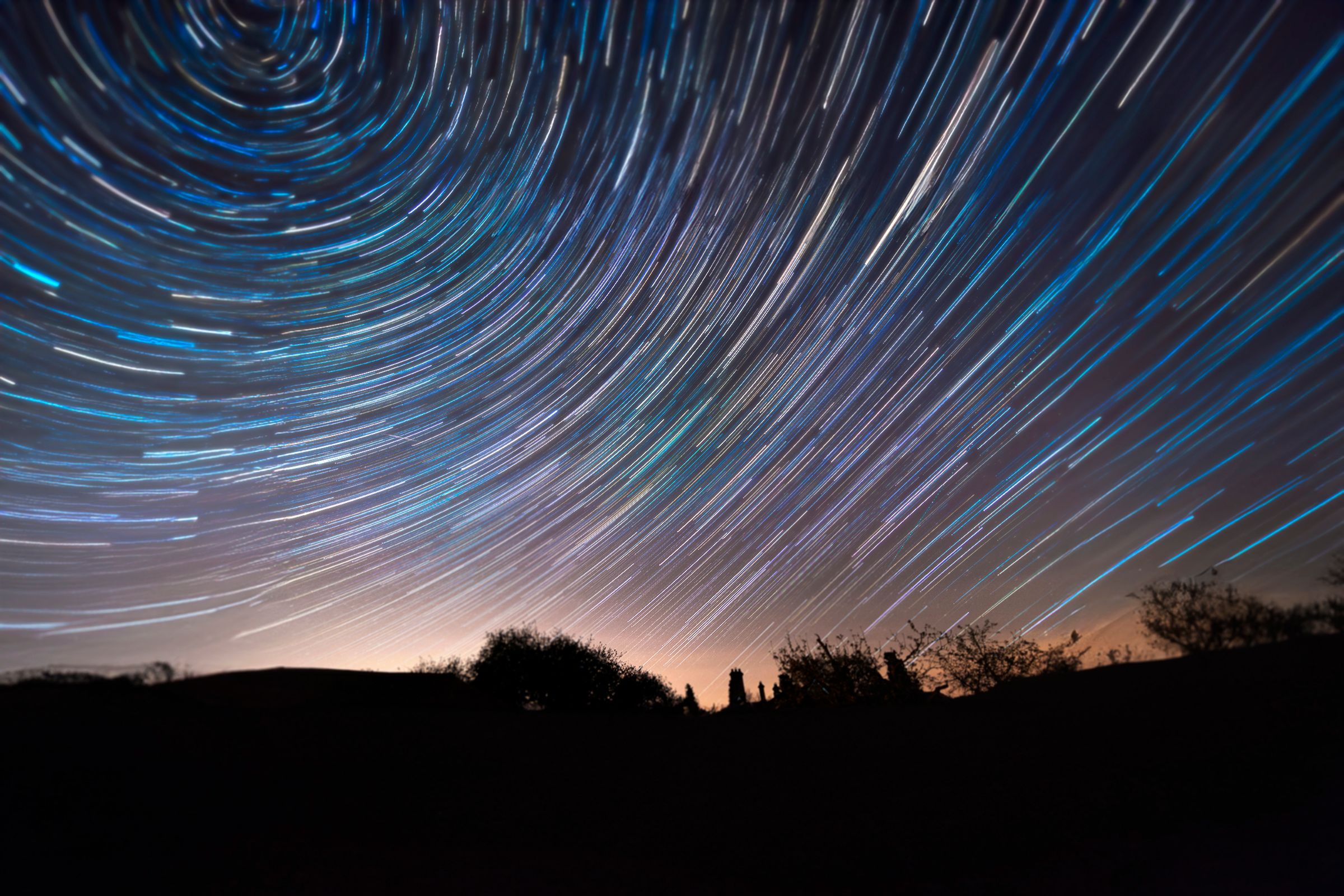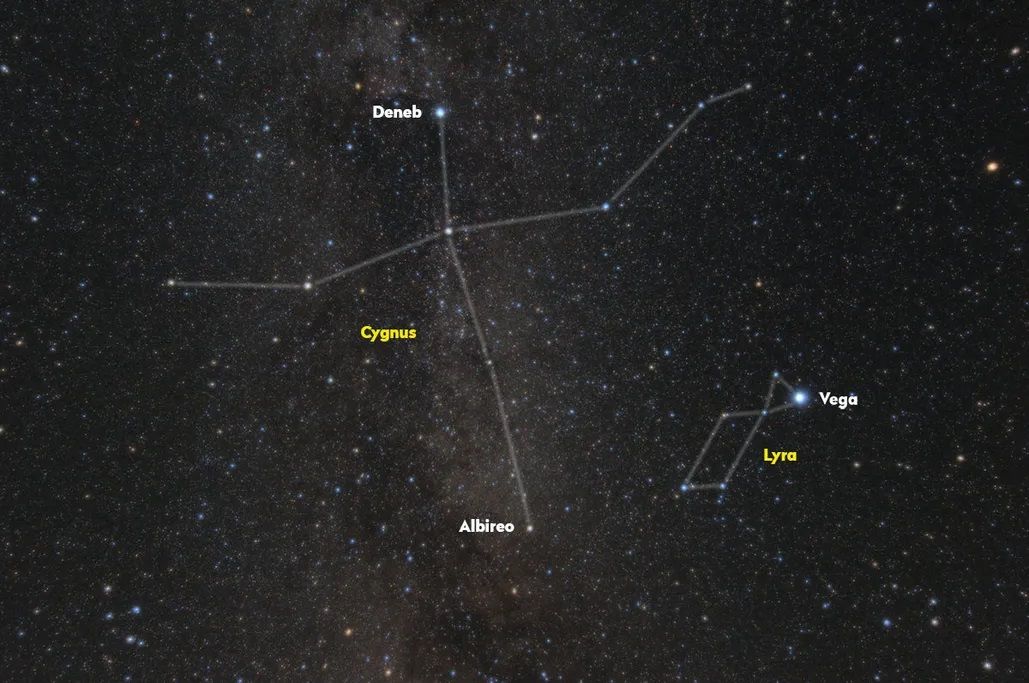
The Complete Lyrids Meteor Shower Viewing Manual for Enthusiasts and Stargazers

The Complete Lyrids Meteor Shower Viewing Manual for Enthusiasts and Stargazers
Quick Links
- What and Where Is the Lyrid Meteor Shower?
- How to Watch the Lyrid Meteor Shower
- How to Photograph the Lyrid Meteor Shower
Key Takeaways
- The Lyrid meteor shower occurs annually from April 14-30, peaking on April 22-23.
- Best viewed in the Northern Hemisphere, prime locations include Montreal, Memphis, and Manchester.
- For photographing, use NightCap for iPhone or adjust Android camera settings, avoid artificial lights, and use a tripod.
While January to March offers some of the darkest skies for stargazing in the Northern Hemisphere, it’s when meteor showers are at their quietest. That’s why we’re really excited about the upcoming Lyrid meteor shower. Let’s look at what it is, how you can see it, and how to capture it on camera.
What and Where Is the Lyrid Meteor Shower?
The Lyrid meteor shower is caused by small pieces of debris falling from and trailing behind the C/1861 G1 (Thatcher) comet, which was discovered by amateur astronomer A. E. Thatcher in 1861. As the Earth passes through Thatcher’s solar orbit, the trailing debris collides with our atmosphere to create a stunning meteor display. It’s called the Lyrid meteor shower because the shoots of light appear to originate near the Lyra constellation , but in fact, the shower has nothing to do with Lyra other than this apparent positional coherence.
Our planet passes through Thatcher’s trail once a year in April. More specifically, it lasts from April 14-30, peaking on the night of April 22-23. The Lyra constellation is best viewable in Northern-Hemisphere skies, and the Lyrid meteor shower’s radiant point is far north on the sky’s dome. While you might see some meteors if you’re in Cape Town or Canberra, you’re more likely to appreciate its spectacle in Montreal, Memphis, and Manchester.
How to Watch the Lyrid Meteor Shower

BBC Sky at Night
To find the Lyra constellation, look for its brightest star, Vega, which is also the fifth-brightest star in the night sky. You’ll see the Lyra constellation under the right-hand wing of the much larger Cygnus constellation.
There are many stargazing apps you can use to help you locate phenomena in the sky. SkySafari is useful because you can type the name of the constellation or star you’re searching for, and it’ll help you center the object. However, don’t worry about focusing your gaze solely on Lyra for the Lyrid meteor shower—you’ll see the shooting trails of light all over the night sky.
The beauty of meteor showers is that you don’t need any special equipment to see them. What you do need, however, is patience.
The best time to see the Lyrid meteor shower is in the early hours of the peak morning, so after midnight on April 22nd. You’ll have much more of a chance of seeing the display if you have a dark sky away from city lights (use a light pollution map to help you with this) and a wide field of view.
Once you’ve located a safe spot, grab a mug of something hot, set a blanket on the ground, and simply look upwards. Be warned: blink, and you might miss one. You might even have to wait an hour before witnessing this astronomical spectacle—meteor showers are frustratingly unpredictable—but if you’re patient (and lucky), you can expect to see between 10 and 30 an hour in the right conditions. Your eyes will need to take time to adjust to the darkness, anyway, so waiting around for a while won’t do any harm.
The biggest final obstacles to shooting star success are things you can’t control. First, the moon will be in its waxing gibbous phase as the meteor shower hits its peak (the full moon is on April 24th), so you can expect some unwanted light to obscure your view of the faintest meteors. Try to plan your time between the setting of the moon and the rising of the sun (between 5 am and 6 am on April 23rd) for the darkest skies. Second, clouds—the biggest thorn in any stargazer’s side. But remember, all things being well, you’ll catch some shooting stars at some point between April 14-30 if you find the right conditions.
How to Photograph the Lyrid Meteor Shower
Just witnessing the Lyrid meteor shower should be enough to wow you, but photographing a streak of dust burning up in our atmosphere can add an extra bit of joy to this addictive hobby. The first thing you’ll need is a sturdy tripod. For the best chance to catch a shooting star, you’ll need to set your phone’s camera to a long exposure and keep it very still. You’ll also benefit from adjusting some of your phone’s settings to get the best shot of the night sky .
Going back to the earlier point about dark skies, the same applies to astrophotography. If you’re near any artificial lights, they will flood your camera lens and severely disrupt your shot.
NightCap is a great free app for capturing moving objects in the sky if you use an iPhone. Along with options for capturing the International Space Station and star trails, there’s a Meteor Mode, which automatically detects any sudden, bright movements of light in the sky and saves them in your gallery.
While similar apps are also available for Android phones, increasing the exposure time in your camera’s night mode (and, if possible, setting a five-second shutter timer or using a shutter-release cable so you don’t accidentally wobble your shot) will almost certainly do the trick if you shoot enough pics.
You should also turn down the brightness on your phone’s screen . Otherwise, your eyes will take time to adjust when you look back up at the sky. Above all, whether you’re out to watch or photograph the Lyrid meteor shower, check the weather forecast, set aside plenty of time, keep warm, experiment, and enjoy!
Also read:
- [New] In 2024, Selecting the Ultimate Business Vault
- [New] In 2024, Top 5 Twitch Broadcasting Techniques
- [Updated] Reality Vs. Virtuality Sustaining VR Creativity Innovation
- AV1 Basics for Beginners Explained
- Capture Life in HD, Affordably – Canon's ELPH 190
- Exceptional Dell XPS 13 2-in-1 Review: A Peek Into Its Superior Performance & Capabilities
- Expert Review: How Does the Netgear Nighthawk X4 Wi-Fi Extender Measure Up?
- Exploring Jabra Talk 45'S Exceptional Sound Quality + Durable Power
- How to Prevent Continual Disruptions During Warzone 2.0 Sessions on Your Gaming Laptop or Desktop
- In 2024, Pivot to Popularity Mastering Video Flip on Social
- In 2024, Quick Profit on Reddit? Here Are Your 13 Most Accessible Ways
- Most Efficient Power Inverters Reviewed: The Ultimate Buyer's Guide
- Review of the Antop AT-127: A Stylish Antenna Bringing You Free, Clear TV Signals
- Ring Battery Doorbell Plus - A Detailed Product Assessment
- TP-Link TL-WR902AC: The Ultimate Portable Wi-Fi Hotspot for Mobile Internet Needs
- Unveiling the Features: A Complete Analysis of Anthropics' Photoshop Alternative
- Unveiling the Premium Our Rankings for Best GoPro Casings
- Title: The Complete Lyrids Meteor Shower Viewing Manual for Enthusiasts and Stargazers
- Author: Eric
- Created at : 2024-11-19 20:08:14
- Updated at : 2024-11-24 21:44:06
- Link: https://buynow-reviews.techidaily.com/the-complete-lyrids-meteor-shower-viewing-manual-for-enthusiasts-and-stargazers/
- License: This work is licensed under CC BY-NC-SA 4.0.